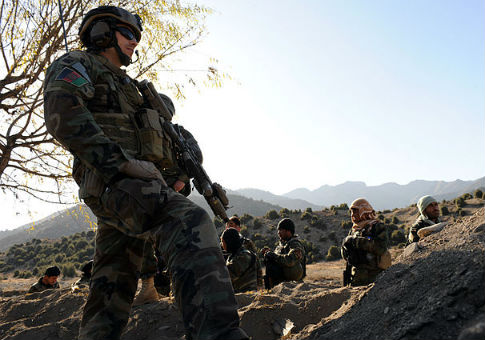Twilight Warriors explains how the U.S. national security apparatus has adapted to fight post-9/11 terrorism. The book begins in 2002 with an examination of interrogation strategies employed against al Qaeda officers captured in Afghanistan. There were two conflicting approaches. The author, journalist James Kitfield, asserts that, while FBI teams built relationships with their detainees and then carefully broke down their resistance to interrogation to gather valuable intelligence, the CIA took a more aggressive and, he argues, unproductive approach.
Kitfield's assessments here are thought-provoking, but limited by his apparently preconceived bias against the CIA’s interrogation teams. For example, in making his case, Kitfield references a highly-partisan report from the Senate Select Committee on Intelligence that was riddled with errors. His prose also indicates his disdain for the George W. Bush administration in general. He lambasts what he describes as its decision to employ "two psychologists and neophyte interrogators down a detour into darkness." Oh my. Perhaps too busy composing such dramatic remarks, Kitfield fails to give adequate consideration to testimony such as in former CIA officer Jose Rodriguez's book Hard Measures.
Nevertheless, we do come to see how the impact of the Iraq War stretched both resources and strategic attention from the fight in Afghanistan. This idea of deploying limited resources to aim at realistic outcomes is a sustaining theme of the book. In the aftermath of the April 2003 overthrow of Saddam Hussein's regime, the U.S. was ill-prepared to grapple with ideologically diverse and competing insurgent groups. Kitfield notes that U.S. "commanders had no doctrine for breaking down and disaggregating a U.S. armored division in order to fight a shadowy enemy composed of loosely linked cells and networks." Kitfield scores justifiable points againt the Bush team here, while also describing how certain U.S. officers adapted against the enemy.
These young officers–most of them were young–began to recruit and run sources inside terrorist networks. In the same way, fusing the intelligence gathered from human assets with a growing fleet of drones and other intelligence sources, special operations forces began to deconstruct the terrorist infrastructure of groups like al Qaeda. We learn, in an impressive and captivating level of detail, considering the shadowy nature of the subject matter, how the NSA helped special operators "fix, find, and finish" senior terrorist leaders. The book's rundown on how al Qaeda in Iraq's leader, Abu Musab al-Zarqawi, was found and killed is particularly enjoyable. Yet Kitfield also uses the Zarqawi story to point out a truth about counterterrorism operations: while there are many terrorist threats, the resources to challenge those threats are finite.
With roughly 70 percent of the task force's critical ISR [intelligence-surveillance-reconnaissance] diverted to the hunt for Zarqawi, the relentless pace of Delta's ... operations began to slow and sputter. The breakneck cycle of operations the task force was pioneering was heavily dependent on unmanned drones persistent stare in particular, and on advance ISR in general. Without those enablers, the task force was forced to ease its relentless pressure on Zarqawi's network.
Also engaging is Kitfield's focus on Iraqi politics. We learn how, under the so-called surge of 2007-2008, U.S. Ambassador Ryan Crocker and Coalition Commanding General David Petraeus collaborated to pressure the Iraqi government against political sectarianism. Kitfield's accounts of the showdowns between Prime Minister Nouri al-Maliki and Crocker/Petraeus illustrate why the U.S. presence in Iraq was so important. It bought the U.S. government influence to pressure Iraqi politicians into national compromises and numerous reforms, such as support for a more professional officer corps in the Iraqi army. This military professionalism was extremely important.
"Otherwise, the Iraqi Army that was being built to serve as an instrument of national unity could become little more than a club in the hands of a sectarian tyrant." Consider the chaos born of President Obama's withdrawal of U.S. forces from Iraq at the end of 2011. "Years later the lesson would be ignored, and the results would come back to haunt [former Chairman of the Joint Chiefs of Staff Martin] Dempsey and the rest of the U.S. high command."
Beyond Iraq, Kitfield explores the domestic and international efforts by the FBI and CIA to counter Islamic extremism. Detailing the intelligence community's ability to identify foreign terrorist threats and catch American terrorists, Kitfield wants the reader to understand that professional skill is at the forefront of keeping America safe. Of particular interest are Kitfield's accounts of al Qaeda operative Najibullah Zazi's 2009 plot against New York City, and his discussion of how the death of Osama bin Laden was, at least in the short term, a double edged sword for U.S. security.
That's because while bin Laden's ending was unequivocally positive, the Obama administration's response to his death was not. In the aftermath of bin Laden's death, the administration moved swiftly to disabuse Americans of the notion that al Qaeda remained a serious threat. Instead, running for re-election on a banner of toughness (bin Laden killed) and disentanglement (withdrawal from Iraq), and a renewed focus on domestic issues, President Obama deprioritized the counterterrorism struggle. Among other tragic consequences, this domestic political strategy helped kindle the embers of Iraq's descent into Iranian-sponsored sectarianism and helped ISIS to form an empire.
Twilight Warriors is an interesting and fact-filled read. Its lesson for national security is crucial: never be afraid to adapt to changed circumstances, and empower collaboration between skilled professionals.
